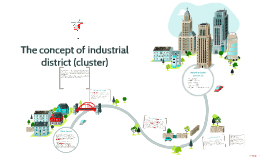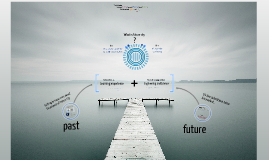City Template
Transcript: Next, Porter revealed that the cluster-based economy capable of encouraging competitiveness in three ways, namely: 1. By increasing the productivity of the industry in the area. 2. By encouraging the creation of new innovations. 3. By encouraging the strengthening of the cluster itself. (Porter, Michael E., Clusters and the New Economics of Competition, Harvard Business Review, 1998). Most references to the origin of industrial districts go back to the economist Alfred Marshall. Marshall expressed his view that when the industry is in a particular geographic region, the handling of the machines and materials will be much easier to do. Marshall also said the positive impact (positive externalities) of industries are concentrated in one area, among others: 1. The existence of knowledge spillover between the existing industries. 2. Input unspecialized of supporting industries. 3. The labor competitiveness (competitive). (Marshall, A, Principles of Economics, 8th ed., 1920). It could be said that the concept introduced by Marshall is closer to the concept of industrial zones or industrial district. Industry cluster consists of: Alfred Marshal The development of the cluster definition starting from a study of the success stories in Northern Italy in the 1980s encouraged the use of terminology industrial district given by Marshall (1920). The definition of cluster is simply a collection of companies sectoral and spatially dominated by one sector. design by Dóri Sirály for Prezi In principle, there are three pillars that are the foundation for cluster-based economy, namely: 1. The geographic area (geographical area). This is a specific area that became the center of activity. 2. Creation of value (value creation). In a cluster composed of various business sectors and industries, each of which create value in the production of goods and / or services they offer. 3. Business environment (business environment). The business environment has a significant influence in shaping the relationship between industry, labor and local government institutions. The existence of the cluster will give more strength to the creation of a competitive business environment. Perspective Michael E. Porter. According to Porter, a cluster-based economy is a concentrated area where there are companies and institutions are interlinked in a particular field. Porter confirms that the keywords in the development of the cluster is the competition (competition). Competition, he said is very dependent on productivity; while productivity lies in the ability of the industry to create products and / or services. Humphrey and Schmitz (1995) The Success of Northern Italy In 1995 the definition of cluster started distinguished from the industrial district, as seen at the time of Humphrey and Schmitz (1995) clarifying the concept of collective efficiency. Cluster is defined as a gathering of the company and sectoral goegrafis. By association, the cluster will benefit from external economies. While the industrial district will arise if the cluster develops more than specialization and division of labor between companies with the advent of the collaboration between the agents of the local economy in the region, and increasing local production capacity and sometimes the innovation capacity also increased (Rabellotti, 1995), as well as the emergence of a strong sectoral associations. Based on the success of the phenomenon of Northern Italy, defined the key characteristics of clusters or industrial districts (Schmitz and Musyck, 1993) as follows: (1) Dominated by small businesses who move in the same sector (specialization in sectors) or sector related; (2) Collaboration between businesses adjacent to the sharing of equipment, information, skilled labor, and so forth; (3) These companies are competing to be based on the quality of the product rather than lowering the cost of production, including wages; (4) Employers and workers have a long history on the site. This facilitates mutual trust in the good relations between small enterprises, between workers and skilled labor; (5) Employers are well organized and actively participate in self-organization; (6) There are local and regional governments are actively supporting the development of local or regional industry cluster. 1. Industrial core 2. Industry Suppliers 3.Buyer / Consumer 4. Supporting Industries 5.Related Industries 6. Organization / Institutional Support The concept of industrial district (cluster)

















